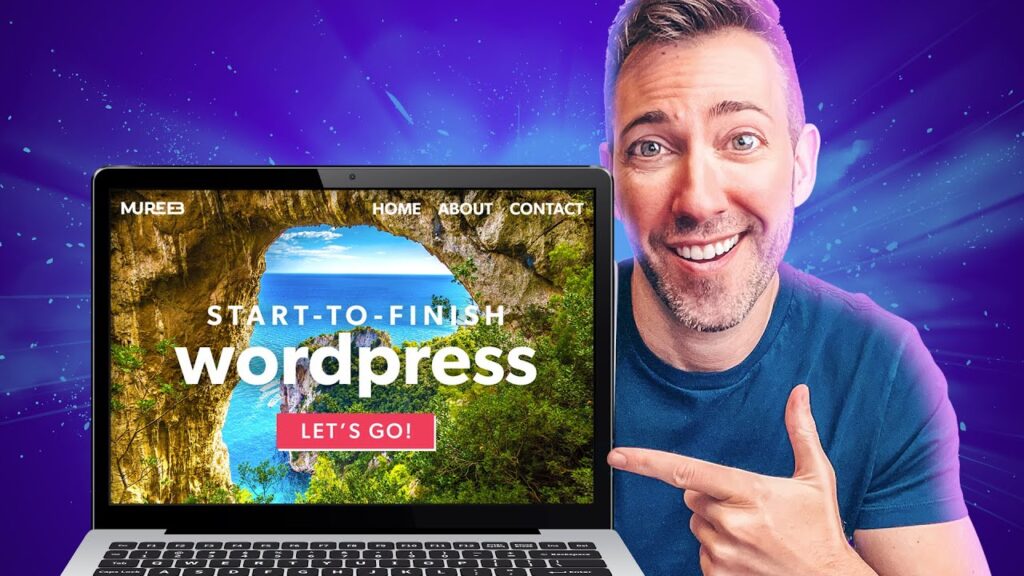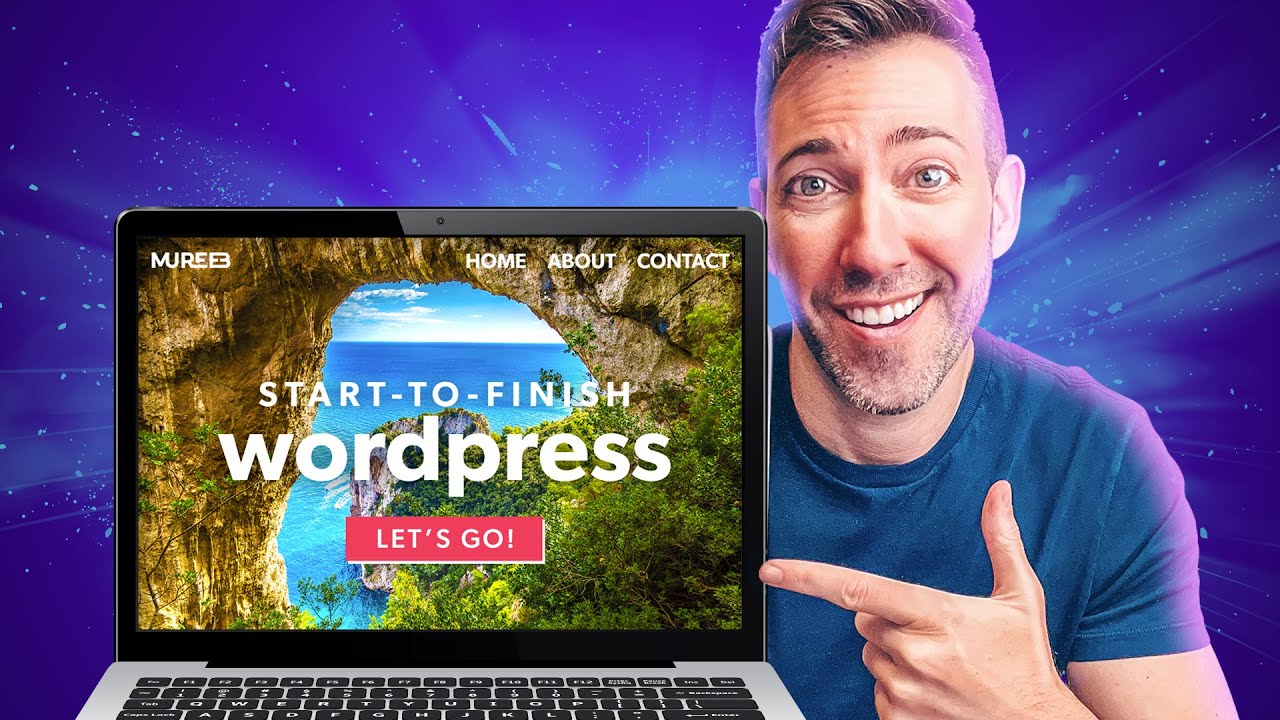In the “WordPress Tutorial for Beginners in 2024” video by Wes McDowell, you’ll learn everything you need to know to create your very own WordPress website without any coding knowledge. Wes McDowell takes you through each step, making it super easy for beginners to follow along. By the end of the tutorial, you’ll have a fully functional website that you can customize to your liking. This guide is tailored specifically for small service business owners who want to build a killer website to attract more clients and grow their business. So, grab a cup of coffee, roll up your sleeves, and let’s get started on creating a website that works as hard as you do!
In the video, Wes McDowell covers topics such as setting up WordPress, using Elementor, installing plugins, choosing colors and fonts, editing sections and widgets, and optimizing design for mobile. The tutorial also provides expert tips and tricks to help you bring your vision to life. Whether you’re a designer, plumber, landscaper, or any other small service business owner, this tutorial is for you. Building a well-crafted website can make all the difference in attracting customers, and Wes McDowell is here to guide you every step of the way.

Setting up WordPress
Choosing a web hosting service
Before you can start setting up your WordPress website, you’ll need to choose a web hosting service. Web hosting is where all your website files will be stored. I recommend using SiteGround, a reliable and affordable hosting provider. By using my link in the description, you can get a discounted price of $2.99 per month.
When choosing a plan, the Startup plan is usually sufficient for most small service businesses. However, if you anticipate getting over 10,000 monthly visits, you might want to consider a higher-tier plan. Once you’ve selected a plan, you’ll be asked if you already have a domain name or if you need to register one. If you don’t have a domain name, you can easily check its availability and register it through SiteGround.
Registering a domain name
A domain name is your website’s address. It’s important to choose a domain name that is memorable and relevant to your business. When registering a domain name, make sure to click on the “12 months” option to get the discounted hosting price. Fill in all the necessary information and proceed with the payment. Once you’ve completed the registration process, you’ll be able to sign into your WordPress dashboard.
Installing WordPress
Now that you have your hosting and domain name sorted out, it’s time to install WordPress. To access your WordPress dashboard, simply log in using the credentials provided to you during the registration process. Once you’re logged in, take a moment to familiarize yourself with the dashboard layout.
Using Elementor
Overview of Elementor page builder
Elementor is a powerful page builder that allows you to create custom designs for your website without any coding knowledge. It’s a drag-and-drop builder that offers a user-friendly interface, making it easy to build and customize your pages.
Editing sections and blocks
With Elementor, you can easily edit sections and blocks on your pages. Elements such as headings, text, images, and buttons can be edited by simply clicking on them and making changes in the sidebar.
Customizing images and text
Elementor provides the ability to customize images and text on your website. You can easily replace or resize images, change font styles, colors, and sizes, and add custom text effects.
Adding widgets
Elementor offers a wide range of widgets that you can add to your pages. These include contact forms, Google Maps, social media icons, videos, and more. Simply drag and drop the desired widget onto your page and customize it to fit your needs.
Adjusting for mobile responsiveness
With the increasing use of mobile devices, it’s important to ensure that your website is mobile responsive. Elementor provides tools to help you optimize your design for mobile. You can preview your website on different devices and make adjustments to ensure a seamless viewing experience across all screen sizes.
Essential plugins
Choosing and installing plugins for enhanced functionality
Plugins are essential for adding extra functionality to your website. There are thousands of plugins available, so it’s important to choose ones that align with your website’s goals. Some popular plugins include Yoast SEO for search engine optimization, Contact Form 7 for creating contact forms, and WooCommerce for setting up online stores. To install a plugin, go to the Plugins section in your WordPress dashboard, click on “Add New,” search for the desired plugin, and click on “Install Now.”
Expert tips and tricks
Changing background images and adding overlays
To enhance the appearance of your website, you can change background images and add overlays. This can help improve visibility and make text easier to read. Consider adding a white overlay or gradient to the background image to ensure optimal readability.
Modifying columns for better text placement
Sometimes, the default settings for columns may not align with your desired text placement. In Elementor, you can modify columns by adjusting padding values. By increasing or decreasing the padding, you can achieve better text placement and reduce visual noise.
Advanced settings for column padding
If you need more precise control over column padding, Elementor offers advanced settings where you can adjust padding values on each side of the column individually. This allows you to fine-tune the design and layout of your website.
Making adjustments to design and layout
Elementor provides extensive options for making adjustments to your website’s design and layout. You can easily change the positioning, size, and color of elements, add or remove sections, and customize various aspects of your website to achieve your desired look.
Creating and customizing pages
Changing page titles
To change the title of a page, simply go to the Pages section in your WordPress dashboard, click on the desired page, and edit the title field. Make sure to save your changes.
Adding sections and blocks
Elementor allows you to add sections and blocks to your pages. Sections act as containers for different blocks and provide structure to your page. Blocks are pre-designed elements that can be customized and rearranged according to your needs.
Customizing images and text
You can easily customize images and text on your pages using Elementor. Whether it’s replacing or resizing images, changing font styles or colors, or adding text effects, Elementor provides intuitive tools for customization.
Making adjustments for mobile responsiveness
Ensuring that your website is mobile responsive is crucial. Elementor provides options to preview and make adjustments for mobile devices. You can rearrange and resize elements to ensure a seamless experience on different screen sizes.
Creating new pages
To create a new page, go to the Pages section in your WordPress dashboard and click on “Add New.” Give your new page a title and start building it using Elementor.
Duplicating existing pages
If you want to create a new page that has a similar layout to an existing page, you can simply duplicate the existing page. This saves you time as you won’t have to start from scratch. To duplicate a page, go to the Pages section, hover over the desired page, and click on “Duplicate.”
Adding pages to navigation menu
To add pages to your website’s navigation menu, go to the Appearance section in your WordPress dashboard and click on “Menus.” Select the desired menu and add the pages you want to include. Don’t forget to save your changes.
Changing site logo
To change your site logo, go to the Appearance section and click on “Customize.” Look for the section that allows you to customize your site’s identity. Here, you can upload a new logo or change the existing one.
Customizing header and menu styles
Elementor provides options to customize the header and menu styles of your website. You can change colors, fonts, layouts, and more. Explore the customization options in Elementor to create a unique and visually appealing header and menu.
Conclusion
I hope this comprehensive article has provided you with the necessary guidance to set up your own WordPress website. In the next video, we will cover the setup of a contact form and email notifications. Remember, having a well-crafted website is crucial for attracting customers and growing your business. I encourage you to subscribe to our channel for future guides and tutorials. Now, grab a cup of coffee, roll up your sleeves, and get started on creating your killer website!
